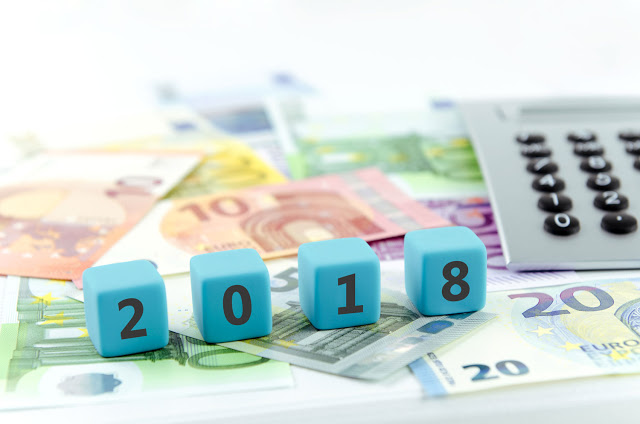Many people face struggles when managing their finances. For some people, they are left with little to less income by the end of every month. Even after effective management of their income sources, it becomes difficult for them to simplify their finances.
This creates problems for them and so, having a proper idea of how to simplify your finances is important. Here are a few ideas on how you can simplify your finances in 2018:
List down your priorities
If you have many objectives to accomplish at a time, it will be difficult for you to complete any of them especially when you have limited resources, such as money, and time to achieve them.
For getting the best results, aim to achieve between three to five financial goals at a time. Try making a list of things you feel are important and should be given the utmost priority. That way you will know what the aim is and how you can go about achieving them. Be very specific about what you want and try avoiding listing unnecessary things.
If you have an objective written in front of you, it is easier for you to figure out what actions you need to take to accomplish that objective. You can list down your priorities pointwise or can have them listed in a descriptive manner. After you list down the essential things, sort them according to their priority levels. Now that you know what is most important to you, you can then plan accordingly to achieve your targets one by one.
Make saving a habit
Not everybody is proactive when it comes to finance related issues. Some people tend to spend a lot of money even after having an aim of saving most of it. Therefore, if your goal is to save money, decide an amount you want to stash away each month.Have this amount transferred to your savings account on your payday. If you never see it, you will never miss it.
Make it a habit to pay your bills on time every month. You can even opt for automatic payments of bills to avoid late fees charges. The automation process takes around 30 minutes to set up, but after you are set it up you never have to worry about making timely payments again. The only precaution you need to take is, making sure you have enough money in your account to make automatic bill payments.
Buy only one fund
Do you own 20 funds in the hopes of having picked at least some of the right ones? The only advice to this is, do not make the mistake of investing in multiple funds at a time. For people who fear or feel uncomfortable in creating an investment strategy, target-date mutual funds can be a particularly good option for them.
Most importantly try to select a fund based on the year you decide to retire. Since you have selected a single fund in your portfolio, this makes you automatically exposed to a variety of stocks and bonds. This way your asset allocation is automatically rebalanced based on your time horizon until retirement.
If you are a business professional and make periodic investments into small businesses, there are many financial firms that can offer unsecured business loans. Such cash flow finance can help small businesses grow and your investment into it will give you good returns.
Monitor your bank account and credit card activity
Make it a habit to regularly monitor your bank account and credit card activities. In this way, you can spot and report any fraudulent activity if any occur. This even helps you to make sure that you are not overdrawing your bank accounts and helps you monitor your spending habits. But not everyone remembers to check their bank account every day.
Most of banks and credit cards have the facility that allows their customers to set up online alerts that do most of the monitoring work for you. Even though people review their transactions periodically, if not on a daily basis, these generated alerts can help you know when you are approaching a certain balance and when you are making unnecessary purchases. You can set payment reminders for your credit cards. This helps you to prevent paying any late fee charges.
Pay your debts first
If you are in debt, paying it off first would be a better option. As easy as it sounds, it is the most difficult thing to do. It is important that you track all the money that is going in and out of your bank accounts. This is to be done after you have tallied up your total debt.
Make a proper list of all the sources of your income, of all the bill payments you need to make and the spending that you make every month.
Research has shown that, people who spend cash to buy items tend to save more than the people who shop from credit cards and gift certificates. People who live by paying cash save almost 20% over their previous savings. Using cash creates a sense of awareness among people and thus they spend less. You are more contemplative, and you realise you’re going to have to pay for things with hard-earned cash how long does it take to buy a home.
You can even get your lender to cut your interest rates. You can do this by transferring the balance. Many credit cards offer promotions of 0% interest for a year or more if you transfer your debt from an old card and pay a small fee. Just make sure that you do not want to move your debt only to possibly get stuck with a higher APR than the one you already have.
Ask for help
You can ask for help from a professional if you cannot stop taking on debt or if you are unable to make payments on what you owe. Credit counselling can be especially useful if you are struggling with student loan debt or medical debt and not just credit card debt.
If you do not want to seek professional help, you can ask a friend to be your accountability partner. Share your debt repayment plan with them and check in periodically about how you are doing.
The 10×10 rule
If you want to create a debt repayment plan that you can follow, you need to set reasonable and sustainable goals. It is better to curb rather than having to cut down on your spending. You may start by slowly following the 10×10 rule which states: “If you could shave £10 off 10 disposable spending accounts, you would never miss it, never feel it, never feel deprived—and you would have another £100 in your pocket”
The bigger picture
There are many online financial tools that help you see your bank accounts, investments, credit cards, loans and credit scores in one place in real time. By using these online financial tools, you have the liberty to access your accounts or investments any time, anywhere, regardless whether you are on your computer, smartphone or your home PC.
This process makes sure that all your finance related information is available to you at your fingertips if you need to make any immediate decisions thus, providing you with a bigger and a better picture. Also, having all your investments together can help you to match up the gains and losses during the tax season. In addition to this, you can print reports or export the data to an excel sheet. This allows for easy collaboration with your tax preparer in the coming April.
Pooling your plastic
Try to transfer the credit card balances on high interest rate cards to the one with lower rates. This may help you in saving your monthly payments and some of the interest. If you transfer the balance, you may be further tempted to close the old accounts to avoid any future temptations. This can cause you more harm than good. Since you will still have the same amount of debt but less available credit, your debt-to-limit ratio will increase. And that is what a number credit agencies pay closer attention to in calculating your credit score.
If you are worried about using the cards again, you might just shred them rather than cancelling them. In this way, you might still have the credit line in your name but you will not have the temptation in your wallet.





